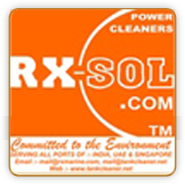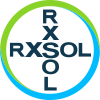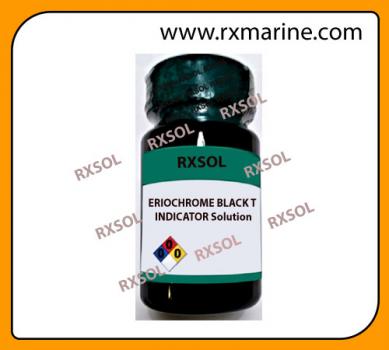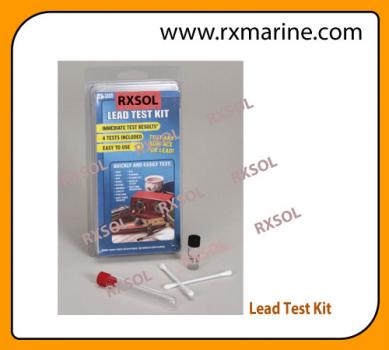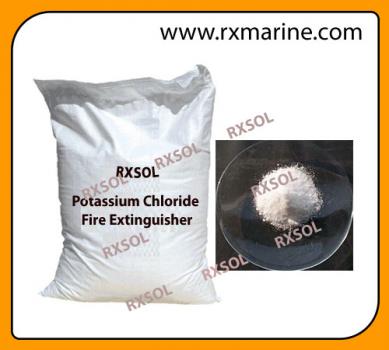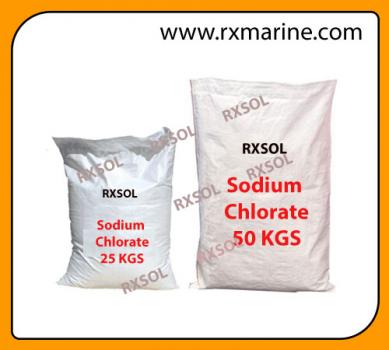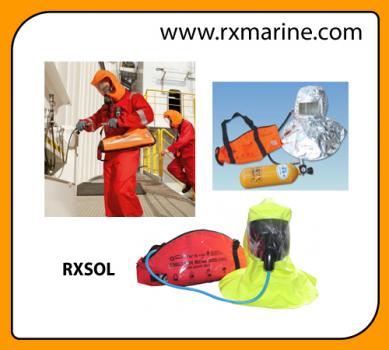Copper compounds have their most extensive employment in agriculture where the first recorded use was in 1761, when it was discovered that seed grains soaked in a weak solution of copper sulphate inhibited seed-borne fungi. By 1807 the steeping of cereal seeds in a copper sulphate solution for a limited time and then drying them with hydrated lime became the standard farming practice for controlling stinking smut or bunt of wheat, which by then was endemic wherever wheat was grown. Flour milled from bunted wheat had to be fed to animals or sold cheaply to ginger bread makers who had found a way of masking its bad taste and color with ginger and treacle. Within a few decades, so general and effective had become the practice of treating seed grains with copper sulphate that the appearance of more than a few bunted ears in a field of wheat was looked upon as a sign of neglect on the part of the farmer. So well have copper compounds controlled bunt that today this seed-borne disease is no longer of any economic importance.
The greatest breakthrough for copper salts undoubtedly came in the 1880's when the French scientist Millardet, while looking for a cure for downy mildew disease of vines in the Bordeaux district of France, chanced to notice that those vines, bordering the highways and which had been daubed with a paste of copper sulphate and lime in water in order to make the grapes unattractive to passers-by, appeared freer of downy mildew. This chance observation led to experiments with mixtures of copper sulphate, lime and water and in 1885 Millardet announced to the world that he had found a cure for the dreaded mildew. This mixture became known as Bordeaux mixture and saw the commencement of protective crop spraying.
Within a year or two of the discovery of Bordeaux mixture, Burgundy mixture, which also takes its name from the district of France in which it was first used, appeared on the scene. Burgundy mixture is prepared from copper sulphate and sodium carbonate (soda crystals) and is analogous to Bordeaux mixture.
Trials with Bordeaux and Burgundy mixtures against various fungus diseases of plants soon established that many plant diseases could be prevented with small amounts of copper applied at the right time and in the correct manner. From then onwards copper fungicides have been indispensable and many thousands of tons are used annually all over the world to prevent plant diseases.
As a generalization, soils would be considered copper deficient if they contain less than two parts per million available copper in the context of plant health. However, where the soil contains less than five parts per million available copper, symptoms of copper deficiency may be expected in animals. The increasing use of chemical fertilizers which contain little or no copper are denuding soils of readily available copper and creating a deficiency of the element in plants and through them in animals. Copper compounds are now being added to the ever increasing copper deficient soils either direct or in combination with commercial fertilizers. This is particularly the case where the fertilizers are rich in nitrogen and phosphorus. Animals grazing on copper deficient pastures or obtaining an inadequate amount of copper through their normal diet will benefit from mineral supplements containing copper.
Copper sulphate, because of its fungicidal and bactericidal properties, has been employed as a disinfectant on farms against storage rots and for the control and prevention of certain animal diseases, such as foot rot of sheep and cattle.
Copper sulphate has many agricultural uses (see below ) but the following are the more important ones:
-
Preparation of Bordeaux and Burgundy mixtures on the farm
-
Control of fungus diseases
-
Correction of copper deficiency in soils
-
Correction of copper deficiency in animals
-
Stimulation of growth for fattening pigs and broiler chickens
-
A molluscicide for the destruction of slugs and snails, particularly the snail host of the liver fluke
Preparation of Bordeaux and Burgundy Mixtures on the Farm
Because of their importance to farmers, instructions concerning the dissolving of copper sulphate and the preparation of both Bordeaux and Burgundy mixtures have been included in the text.
Dissolving Copper Sulphate
Iron or galvanised vessels must not be used for the preparation of copper sulphate solutions. Plastic vessels, now freely available, are light and very convenient. To make a strong solution, hang a jute sack of copper sulphate so that the bottom of it dips a few inches only in the water. The copper sulphate will dissolve overnight. Copper sulphate dissolves in cold water to the extent of about 3 kg per 10 litres. If more than this is placed in the sack described above, then a saturated solution will be obtained and it may be used without serious error on the basis that it contains 3 kg copper sulphate per 10 litres.
Preparation of Bordeaux Mixture
Bordeaux mixture is prepared in various strengths from copper sulphate, hydrated lime (calcium hydroxide) and water. The conventional method of describing its composition is to give the weight of copper sulphate, the weight of hydrated lime and the volume of water in that order. The percentage of the weight of copper sulphate to the weight of water employed determines the concentration of the Bordeaux mixture. Thus a 1% Bordeaux mixture, which is the normal, would have the formula 1 :1:100the first 1 representing 1 kg copper sulphate, the second representing 1 kg hydrated lime, and the 100 representing 100 litres (100 kg) water. As copper sulphate contains 25% copper metal, the copper content of a 1% Bordeaux mixture would be 0-25 % copper. The quantity of lime used can be reduced considerably. Actually 1 kg copper sulphate requires only 0.225 kg of chemically pure hydrated lime to precipitate all the copper. Good proprietary brands of hydrated lime are now freely available but, as even these deteriorate on storage, it is safest not to exceed a ratio of 2:1. i.e. a 1:0.5:100 mixture.
In preparing Bordeaux mixture, the copper sulphate is dissolved in half the required amount of water in a wooden or plastic vessel. The hydrated lime is mixed with the balance of the water in another vessel. The two "solutions" are then poured together through a strainer into a third vessel or spray tank.
Preparation of a 1% Burgundy Mixture
Dissolve separately 1 kg copper sulphate in 50 litres water and 125 kg washing soda (or 0.475 kg soda ash) in 50 litres water and slowly add the soda solution to the copper sulphate solution with stirring. Control of fungus diseases
Bordeaux and Burgundy mixtures have been found effective in controlling a whole host of fungus diseases of plants. Normally a 0.5 % to 1 % Bordeaux or Burgundy mixture applied at 2 to 3 week intervals suffices to control most copper-susceptible fungi.
Generally, once the fungus spores have alighted on the host plant and penetrated the tissues it is difficult to control them. The principle of control must in most cases depend on protection, ie preventing the fungus spores from entering the host tissues. Copper fungicides are noted for their tenacity and for this reason, are much to be preferred in areas of high rainfall.
The simplest method of control is to apply a protective coating of Bordeaux or Burgundy mixture (or other copper fungicides) to the susceptible parts of the plant, so that spores alighting on them come in contact with the protective film of copper and are killed instantly. It is thus important to remember that the first spraying must ideally be made just before the disease is expected and continued at intervals throughout the susceptible period. For this reason it is important to take advantage of the early warning schemes which are in operation to ensure greater accuracy of the timing of the first spraying.
It must also be remembered that fungi are plants and that control measures that will kill them may not always leave the host plant unaffected. The use of too concentrated a fungicide mixture must, therefore, be guarded against, particularly for the early sprays.
Copper fungicides have been reported effective against numerous plant diseases. A list, by no means exhaustive, of some 300 diseases that have been found amenable to control by copper fungicides, appears in Table B.
Correction of Copper Deficiency in Soils
Where copper deficiency has been confirmed by soil analysis or field diagnosis, whether in plants or animals, it can be corrected very simply either by applying 50 kg copper sulphate per hectare in the form of a fertiliser before sowing or by spraying the foliage of the young cereal plants, when they are about 150 mm high, with 750 grams copper sulphate (dissolved in from 400 to 2,000 litres water) per hectare. The soil application has generally given the better results and has the advantage that it may have a residual effect for more than ten years. The foliar application has to be given annually to each crop. An alternative is to add a copper containing slag (normally about 1% to 2 % copper) at a rate of a tonne to the hectare.
Correction of Copper Deficiency in Animals
A method of correcting copper deficiency in livestock is to treat the soil on which animals graze. For example, in Australia and New Zealand swayback in lambs is being prevented by top dressing copper deficient pastures with 5 to 10 kg copper sulphate per hectare some time before lambing begins.
Other methods include drenching periodically with a copper sulphate solution; incorporating copper sulphate in salt and other animal licks; or by what is probably the most general method, incorporating copper sulphate along with other minerals and vitamins in the form of carefully blended supplements in the feeding stuffs.
Stimulation of Growth for Fattening Pigs and Broiler Chickens
The inclusion of up to as much as 0.1% copper sulphate in the diet of bacon and pork pigs and broiler chickens stimulates appetite and produces increased growth rate with a marked improvement in feed conversion.
A molluscicide for the destruction of slugs and snails, particularly the snail host of the liver fluke. All likely habitats of the liver fluke snail should be treated with copper sulphate at the rate of 25 kg to the hectare at least twice a year in June and August (northern hemisphere) or December and February (southern hemisphere).





